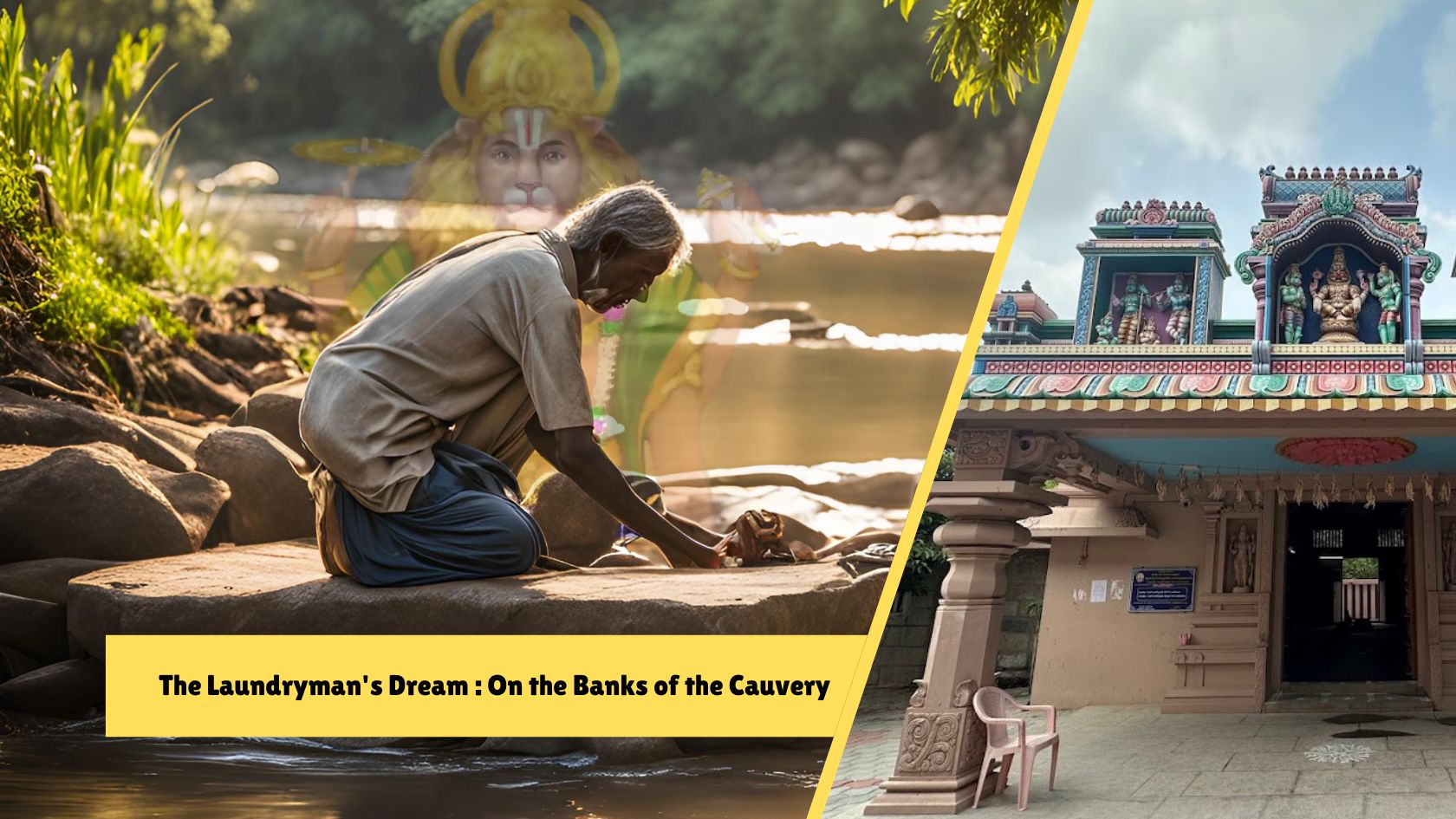
The sun beat down on my back as we stepped out of the car, the air thick with the humidity of rural Tamil Nadu. Chinthalavadi, a small village nestled between Trichy and Karur, was our destination. I had heard whispers of a temple here, a temple dedicated to Yoga Narasimha Swamy, and a story about a laundry man. Intrigued, I had set out to experience it for myself.
The temple, as promised, was an oasis of serenity. Lush greenery enveloped the grounds, a stark contrast to the dusty road that had led us here. The gentle murmur of flowing water filled the air – a canal branching off the mighty Cauvery flowed through the temple's backyard, adding to the tranquil atmosphere.
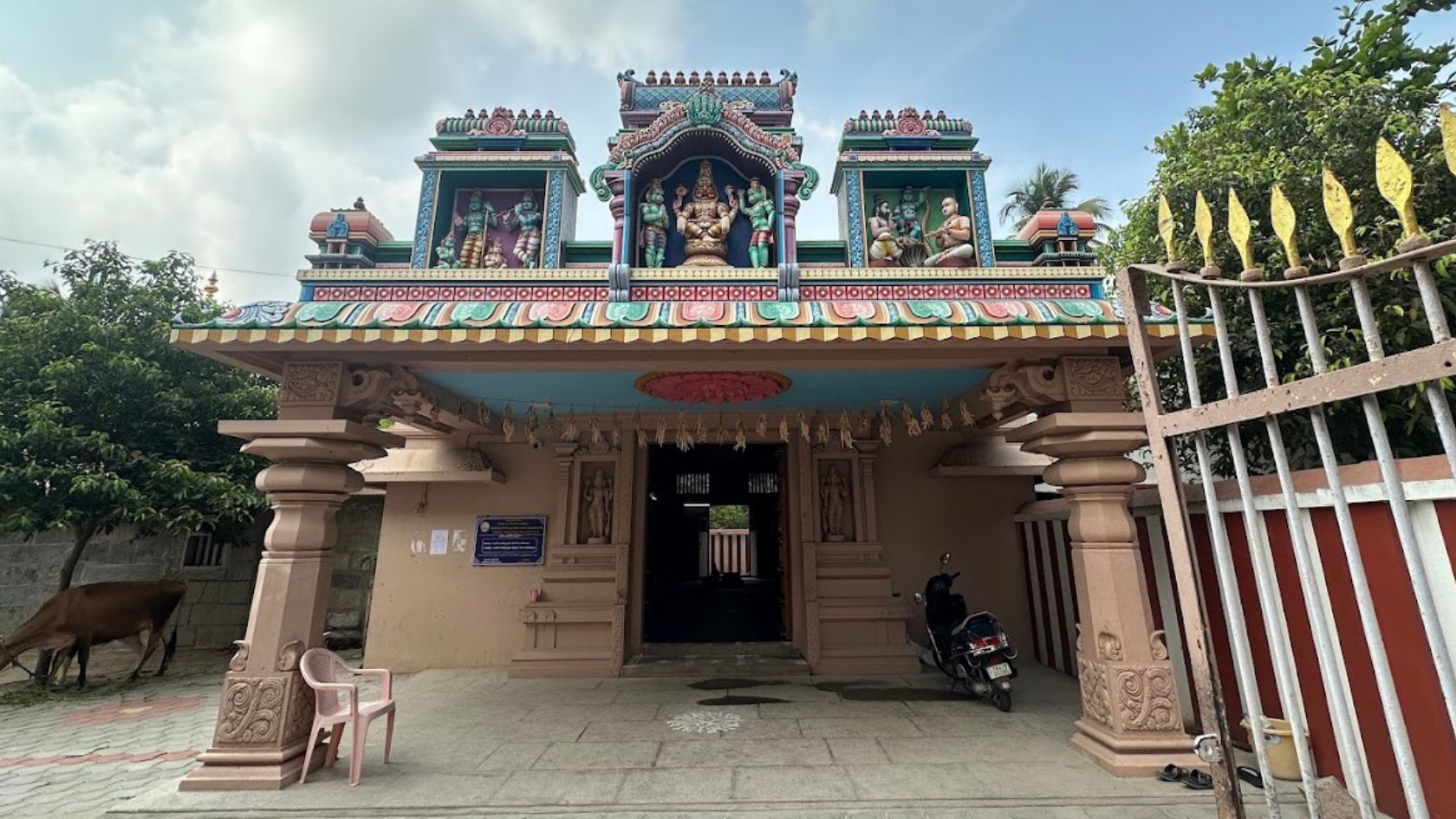
Stepping into the sanctum, I felt a palpable shift in energy. There He was, Yoga Narasimha Swamy, radiating an aura of power and tranquility, from an embedded stone, which was originally a washing stone from the river cauvery. One could understand by the structure of the stone that it once used to be a washing stone, now turned upside down, revealing the deity. His form, seated in a yogic posture, exuded a sense of deep meditation. The structure was not well visible until after the abishekam when the features of the deity became strongly visible. Beside him, the playful energy of Gopala Krishna balanced the intensity, a divine juxtaposition.
The story of Sri Yoga Narasimhaswamy temple begins not within the tranquil confines of Chinthalavadi, but in the bustling town of Thirukkambuliur, some seven kilometers away. It was here that Srimushnam Ariachar, a revered figure, resided. One night, as the moon cast long shadows across the land, Sri Narasimha, the fierce lion-headed avatar of Vishnu, appeared to Ariachar in a dream.
The dream was vivid, the Lord's voice booming with both urgency and distress. He revealed to Ariachar that his very own image, a sacred sculpture, lay abandoned and forgotten in the village of Karuppathur. Worse still, a laundryman, unaware of the divine presence, was using the sculpture's back as a washboard for his daily chores. Sri Narasimha implored Ariachar to rescue his image and bring it to safety.
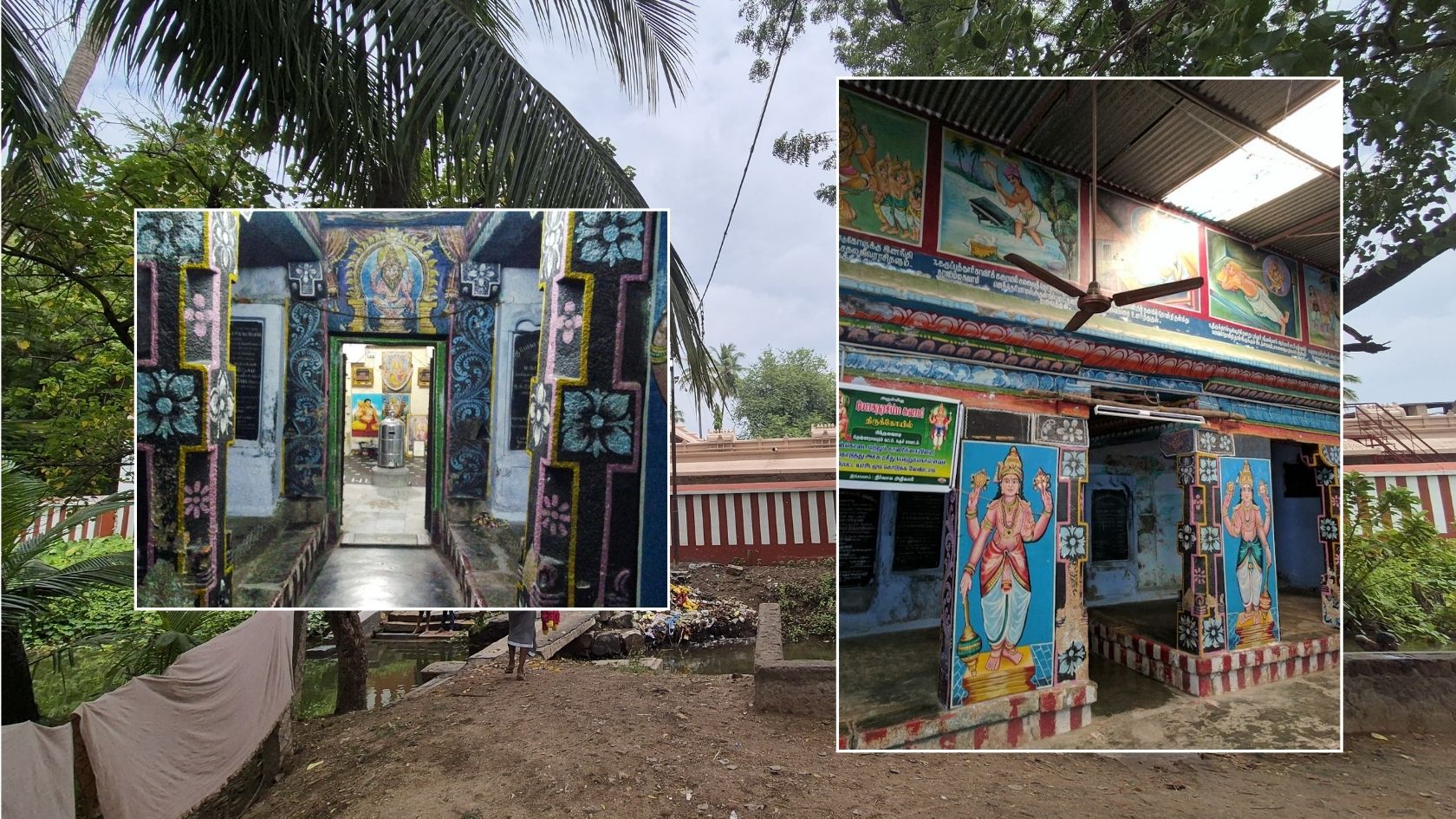
Awakened with a start, Ariachar wasted no time. He immediately set off towards Karuppathur, his heart pounding with a mix of anticipation and trepidation. Upon reaching the village, he found the laundryman exactly as described in the dream. But what surprised Ariachar even more was the laundryman's own tale. He too had experienced a dream the previous night, where Sri Narasimha appeared, not with a plea for rescue, but with instructions to hand over the stone to a man who would soon arrive.
The divine intervention was clear. With reverence and care, Ariachar lifted the stone sculpture, ready to carry it back to Thirukkambuliur. However, as he reached Chinthalavadi, the weight of the sculpture became unbearable. He simply couldn't carry it any further.
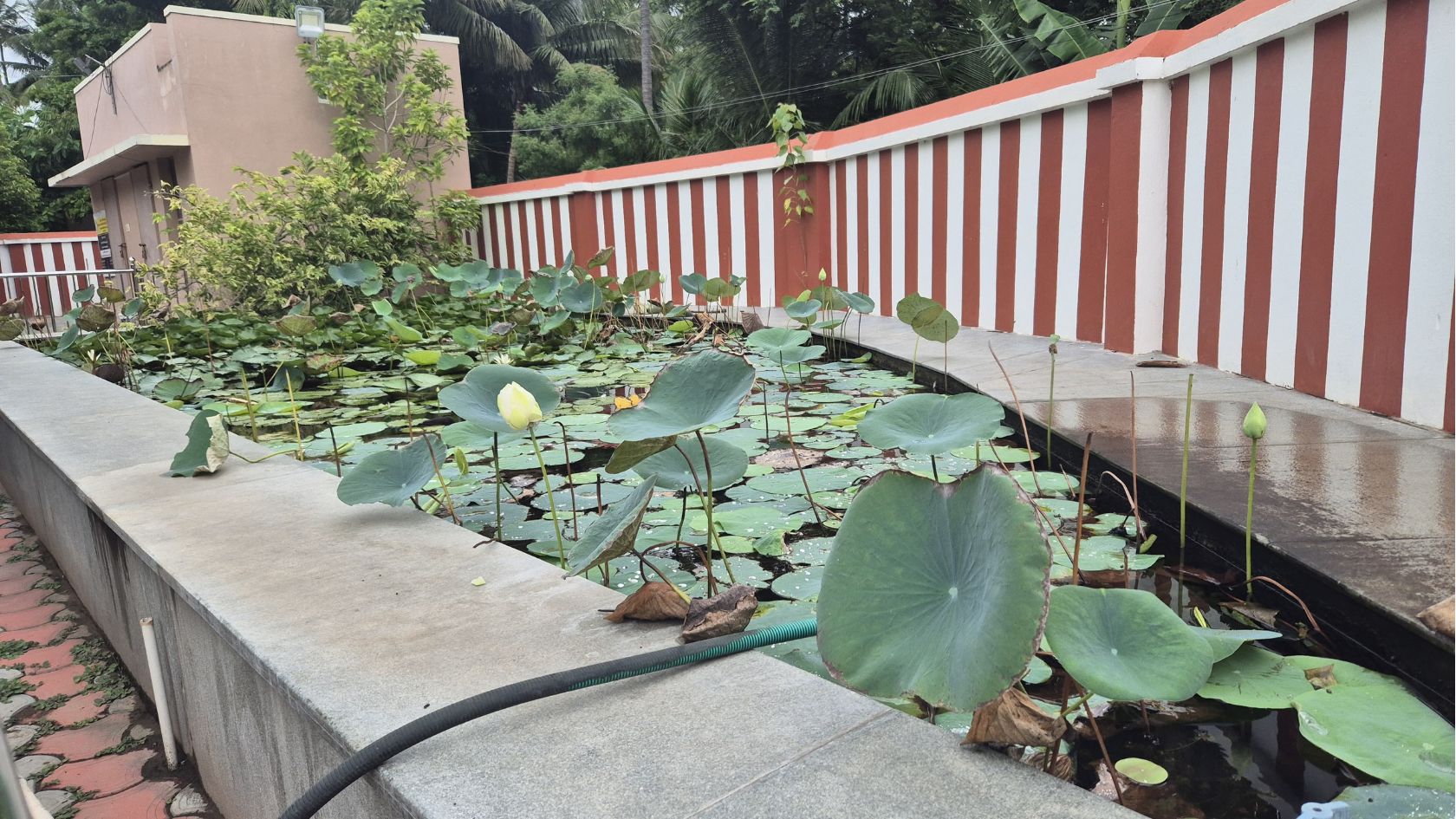
Now, Chinthalavadi was no ordinary village. The great sage Vyasatirtha had already graced this place with his presence and installed the deity Mukhyaprana. Seeking guidance, Ariachar approached Vyasatirtha, explaining the dream, the laundryman, and the impossible weight of the sculpture. Vyasatirtha, with his profound wisdom, instantly understood the divine plan. He instructed Ariachar to install Sri Narasimha right there in Chinthalavadi.
And so it was. The abandoned sculpture, rescued from obscurity, found its rightful place in the heart of Chinthalavadi. The news of this divine installation reached Vyasatirtha himself, who then visited the temple to offer his respects. Not only that, he further blessed the temple by installing the deity of Sri Gopalakrishna alongside Sri Yoga Narasimha.
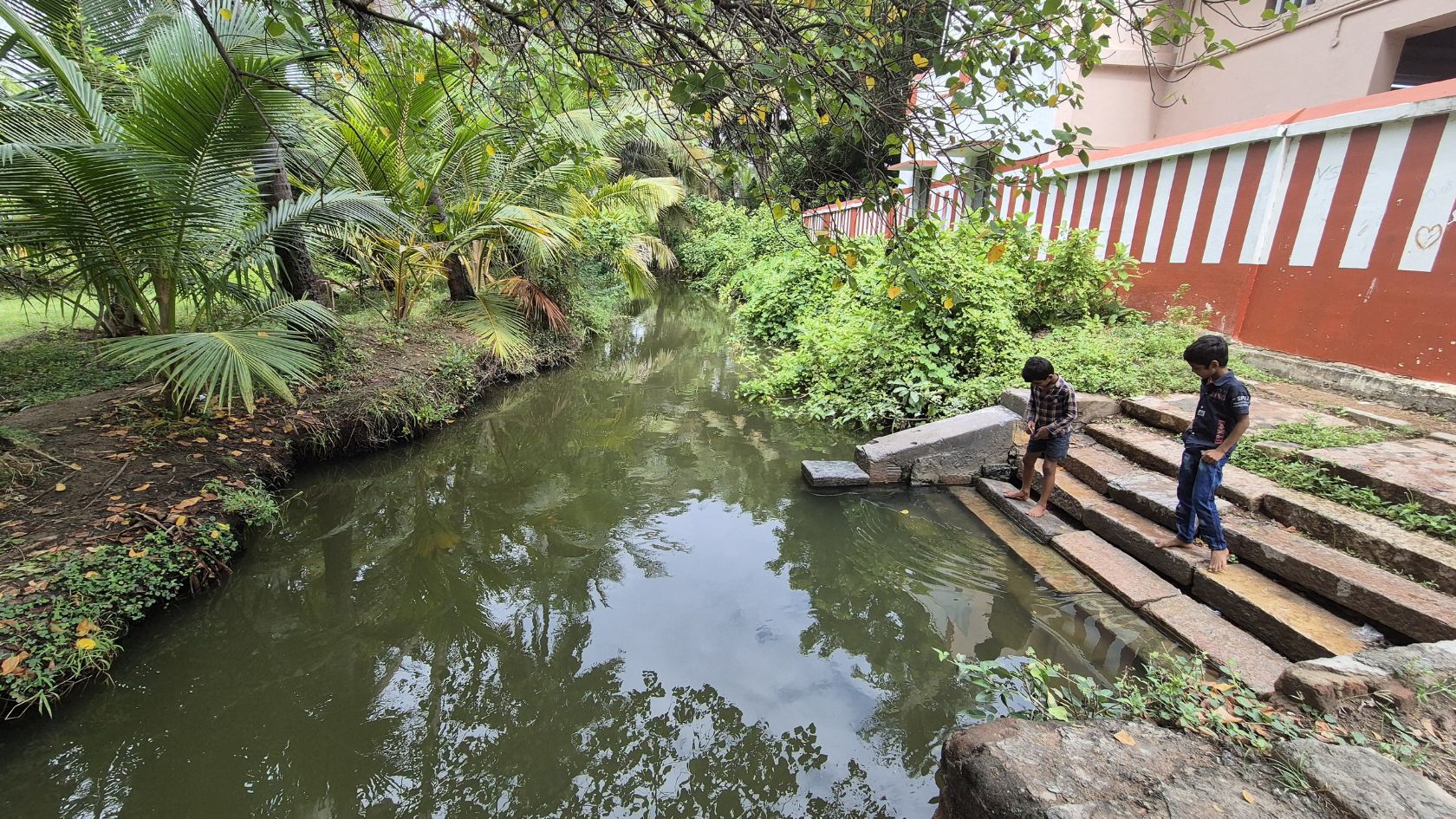
Thus, the Sri Yoga Narasimhaswamy temple came to be, a testament to divine intervention, dreams, and the devotion of great sages. The temple, with its serene atmosphere and the powerful presence of Yoga Narasimha, continues to draw devotees from across India, a beacon of faith and a living testament to a story that began with a dream.
As I explored the temple grounds, I discovered the shrine dedicated to Madhwa, a testament to Vyasatirtha's presence here. The air hummed with the devotion of countless pilgrims, their prayers echoing through the ages.
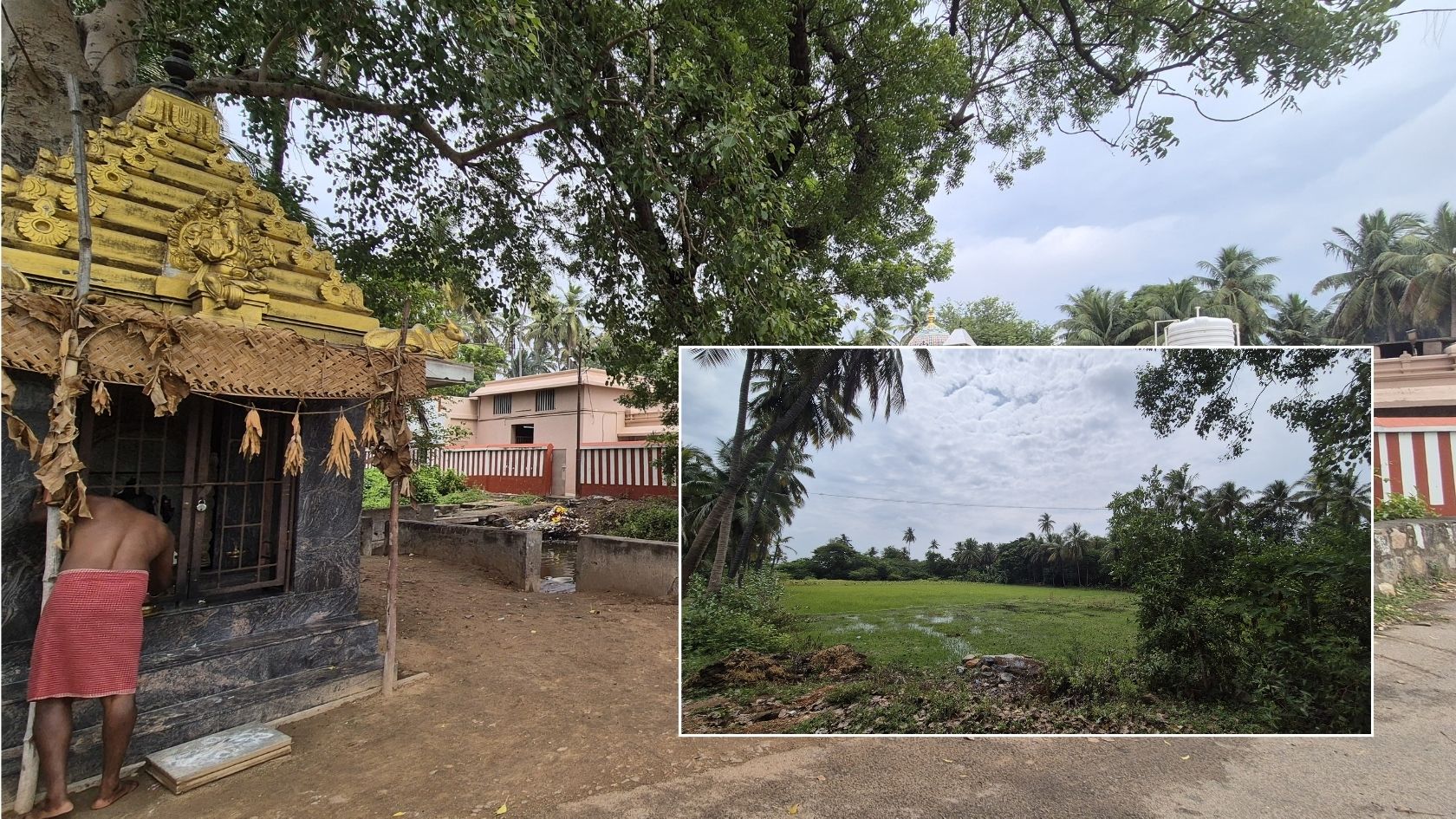
The vibrant energy of Sri Yoga Narasimhaswamy temple extended beyond the divine and into the everyday lives of the local community. This wasn't just a place of worship; it was a living, breathing heart of the village, particularly for the betel leaf farmers who considered Yoga Narasimha their family deity (kula deivam).
A testament to this deep-rooted connection was the daily ritual of head shaving within the temple grounds. It was a common sight to see families, young and old, participating in this act of devotion, their heads bowed in reverence as strands of hair fell to the ground, symbolizing surrender and renewal.
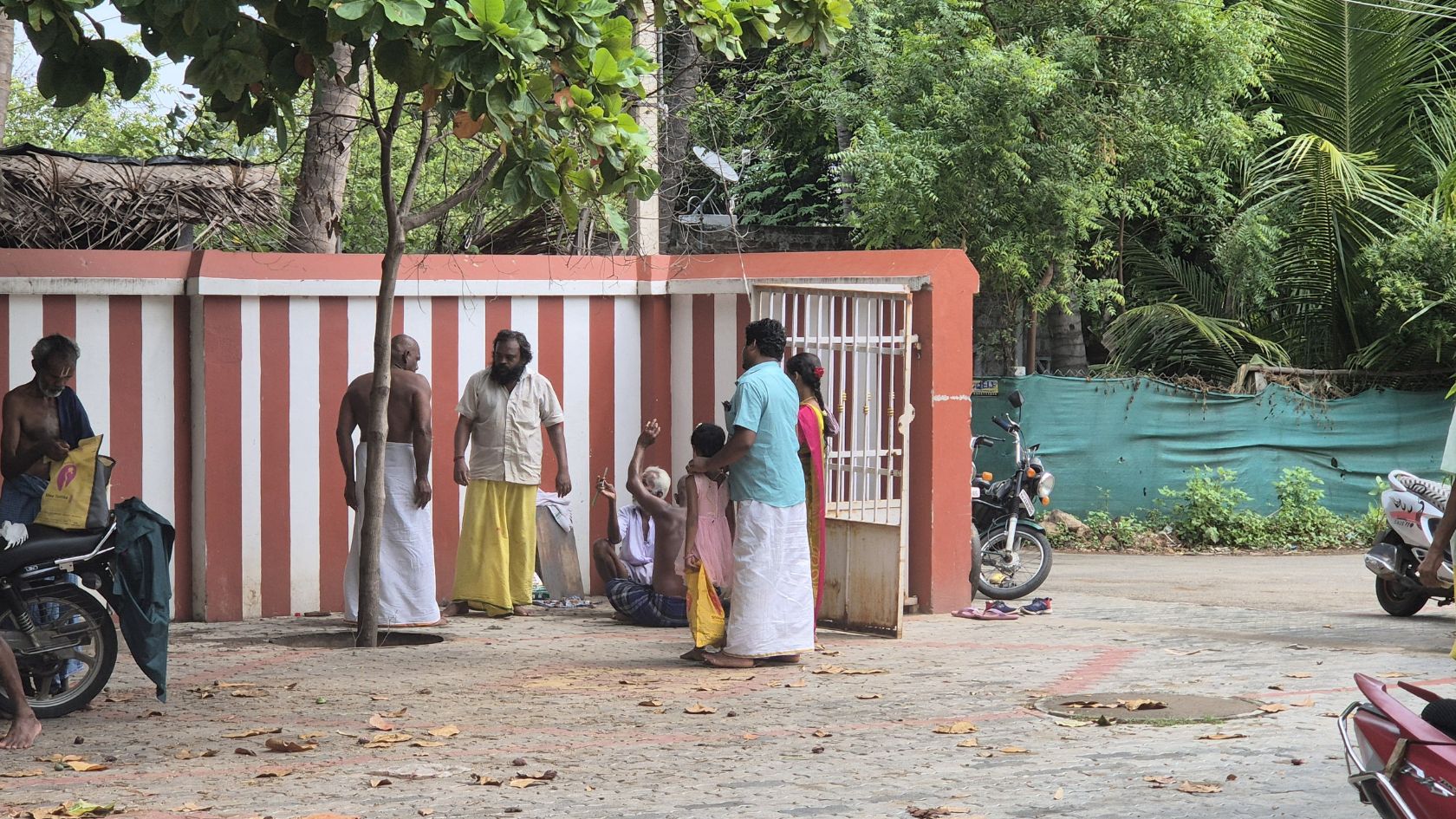
Adding to this lively atmosphere were the children who filled the temple with their innocent laughter and playful energy. They chased each other through the corridors, their tiny hands reaching up to touch the intricately carved pillars. Unburdened by the weight of the world, they seemed to embody the pure joy of faith, their presence a reminder of the temple's role in nurturing future generations.
Witnessing this harmonious blend of devotion and daily life was truly heartwarming. The temple wasn't a sterile monument, but a vibrant hub of activity. It was a proof to the enduring power of tradition, where the divine and the mundane coexisted in perfect harmony, creating an atmosphere that was both sacred and welcoming.
Leaving the temple, I carried with me more than just memories. The story of Yoga Narasimha Swamy, the serenity of the surroundings, and the palpable devotion had woven themselves into my experience. I suggest anybody who would travel along karur to visit the temple and experience the same. Chinthalavadi, a small village on the banks of the Cauvery, had offered a glimpse into the divine, a story whispered on the wind and etched in stone.
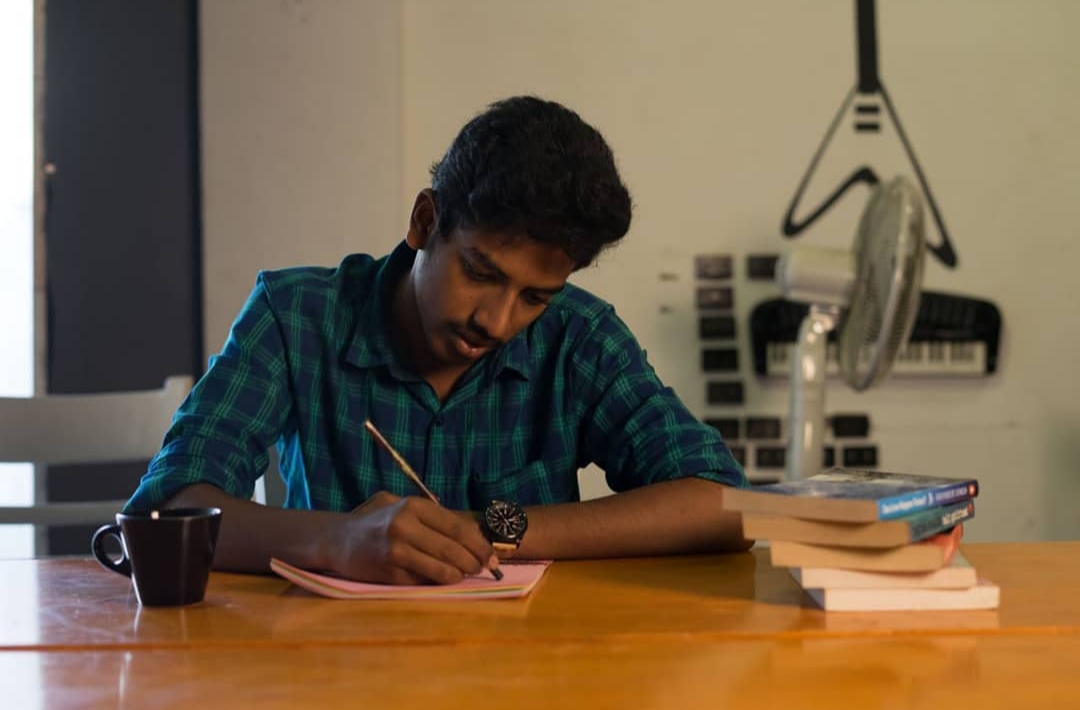 Vigneshwaran, Senior Correspondent of TheVerandahClub.com is both a skilled digital content writer and marketer by profession, as well as an avid independent writer driven by his passion. His literary talents extend to crafting beautiful poems and captivating short stories including the Sehwag Tales series. In addition to these creative pursuits, he has also authored a book titled "Halahala," which can be found on Wattpad.
Vigneshwaran, Senior Correspondent of TheVerandahClub.com is both a skilled digital content writer and marketer by profession, as well as an avid independent writer driven by his passion. His literary talents extend to crafting beautiful poems and captivating short stories including the Sehwag Tales series. In addition to these creative pursuits, he has also authored a book titled "Halahala," which can be found on Wattpad.
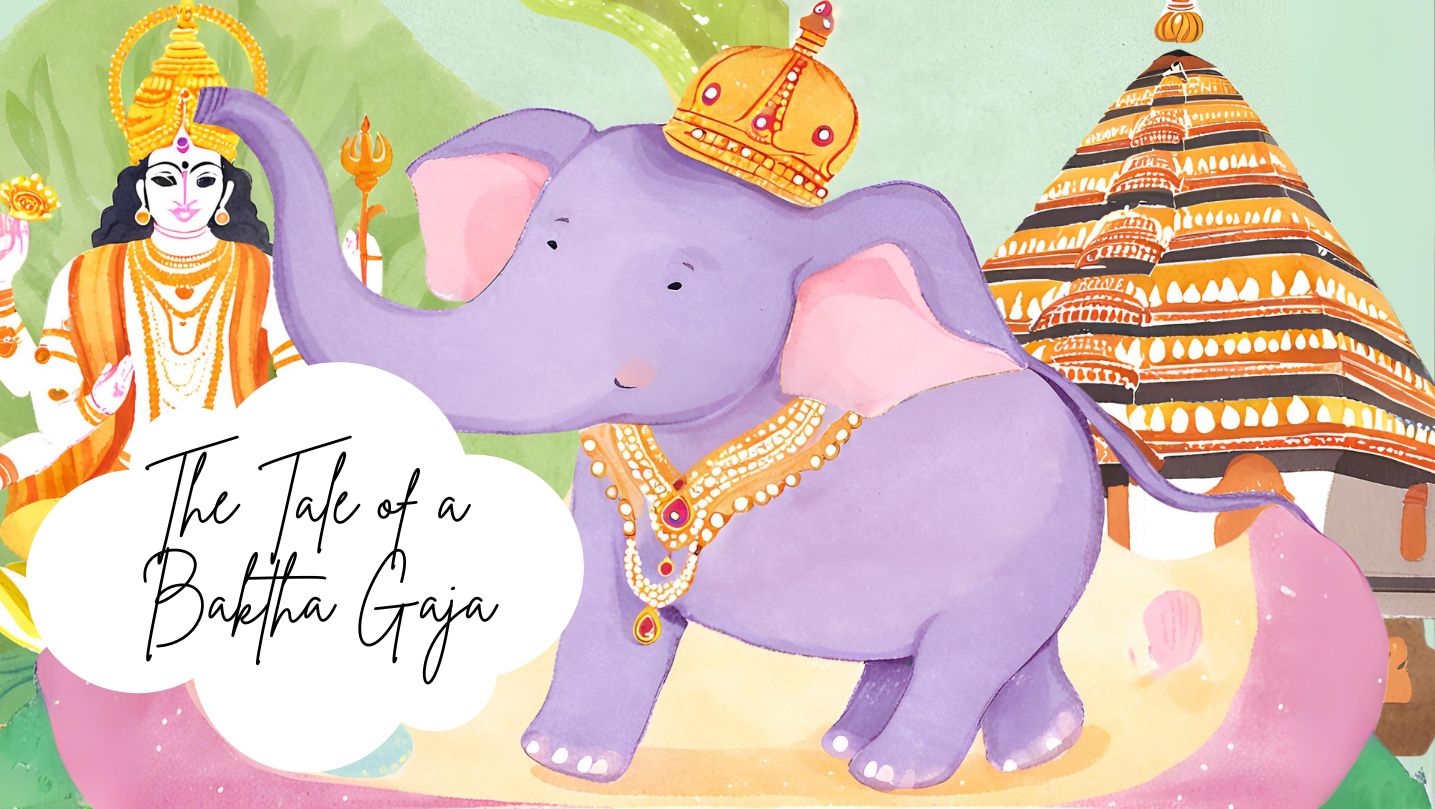
In the lush, green heart of Kerala lived an elephant who became a living legend - a tale of an elephant turned into a bakth. His name was Keshavan, bu...
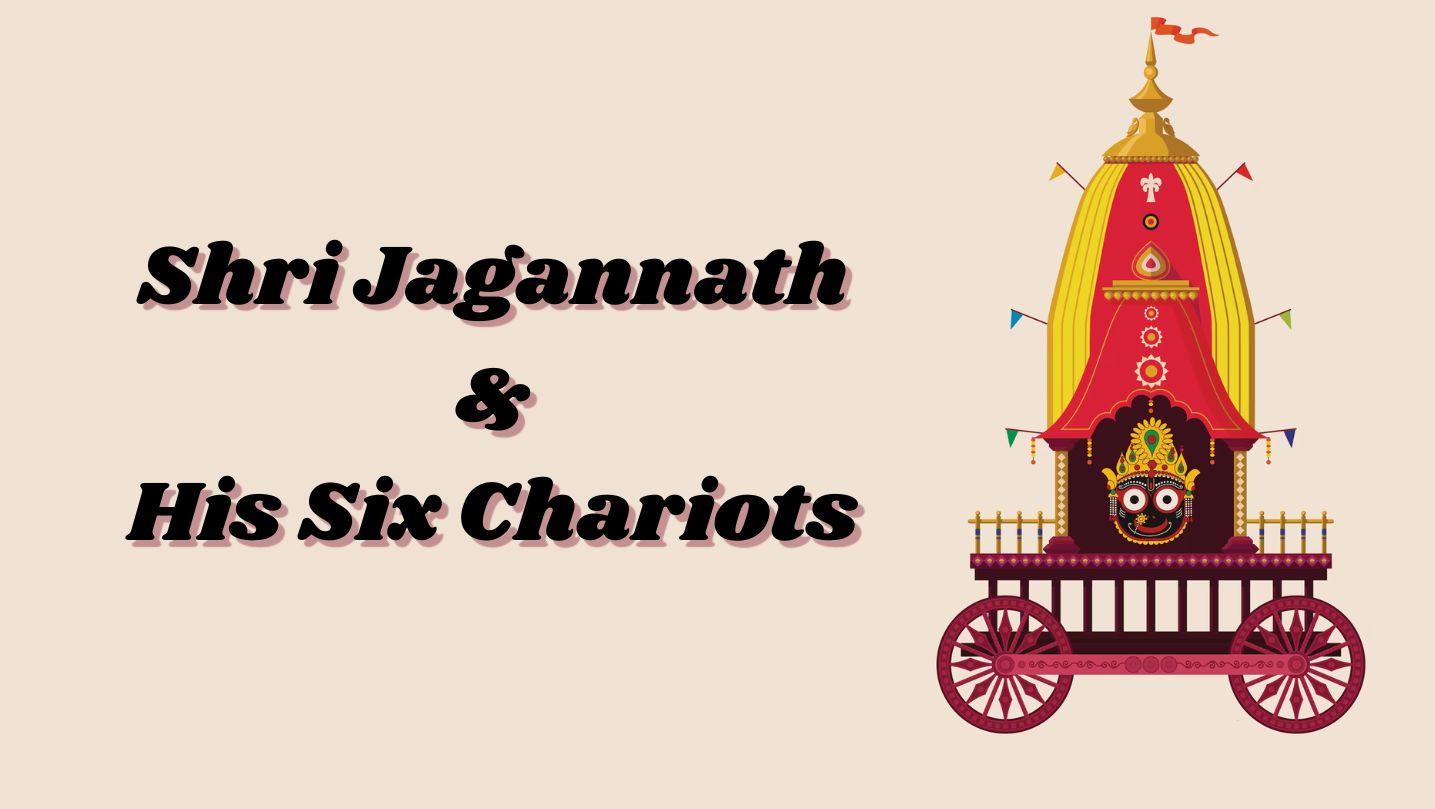
The Chaitanya Charitamrita by Shri Krishna Das Kaviraj provides a vivid description of the operations management of Shri Gundicha Yatra during the tim...
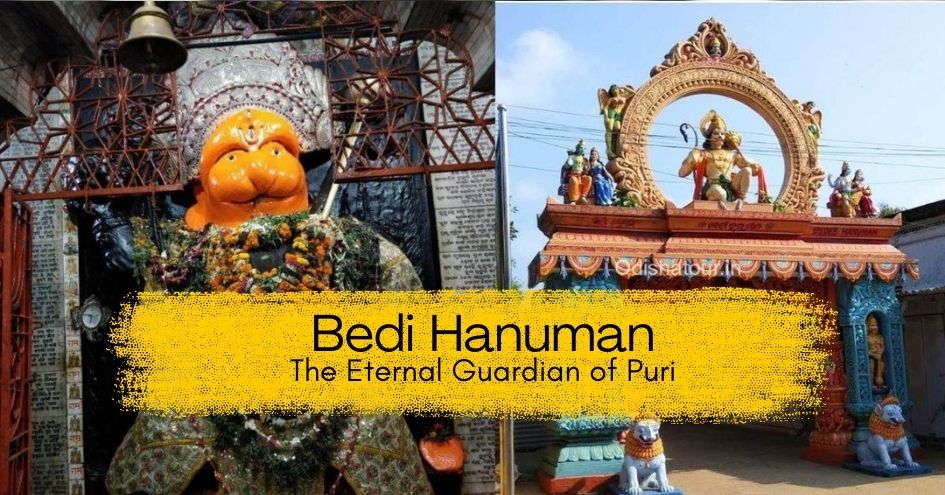
There are Ashta Mahaviras (eight manifestations of Lord Hanuman) engaged in protecting Puri Dham in Odisha. They are Siddha Mahavira, Daria Mahavira o...